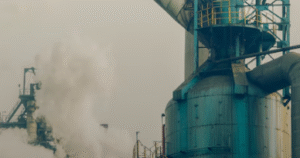$JBHT $UPS $XPO
#TruckingIndustry #TradeWar #Tariffs #USAEconomy #Agriculture #OilIndustry #RetailCrisis #ManufacturingDecline #SupplyChain #FreightVolumes #EconomicIndicators #TransportationSector
Recent data points towards a divergent trend in U.S. trucking volumes following the announcement of new tariffs earlier this month, highlighting a complex interplay between trade policies, sectoral performance, and geographic disparities. This disparity underscores the nuanced impact of tariffs on the economy, with some sectors and regions exhibiting robustness while others face significant challenges. The transportation sector, a critical barometer for economic health, is experiencing this schism firsthand, offering insights into the broader economic landscape influenced by ongoing trade tensions.
In particular, sectors such as agriculture and oil have shown resilience or even growth in trucking volumes. This uptrend could be attributed to several factors including seasonality, the strategic importance of these commodities, and possibly shifts in global trade flows favoring U.S. exports in these categories. For example, agriculture often experiences increased activity during specific seasons, and the data may reflect this cyclical pattern. Similarly, the oil sector’s performance is intricately tied to global energy demands, geopolitical dynamics, and domestic production trends, which may buoy trucking volumes despite broader trade uncertainties.
Conversely, the retail and manufacturing sectors are witnessing a stark contrast, with trucking volumes in a precipitous decline. This downturn reflects the broader challenges facing these sectors, including shifting consumer behaviors, supply chain disruptions, and the direct and indirect impacts of tariffs on import-dependent industries. Retail, in particular, is grappling with the dual challenges of evolving consumer preferences and the escalating costs associated with tariffs, impacting not only the cost of goods sold but also the logistical expenses tied to transportation. Manufacturing is similarly impacted, with tariffs disrupting raw material costs and international supply chains, thereby affecting production cycles and ultimately, trucking volumes.
This dichotomy within the trucking industry highlights the multifaceted effects of trade policies on different economic sectors and regions. While tariffs may protect certain industries, they can also impose significant burdens on others, illustrating the delicate balance policymakers must navigate. Moreover, trucking volumes offer a real-time glimpse into the undercurrents of economic activity, serving as a leading indicator for analysts and investors alike. The ongoing shifts underscore the importance of monitoring transportation trends closely, as they provide valuable insights into the broader economic impact of trade policies, sectoral health, and regional economic vitality. Understanding these dynamics is crucial for stakeholders across the spectrum, from policymakers to businesses, as they adapt to an ever-evolving economic landscape marked by uncertainty and change.







Comments are closed.